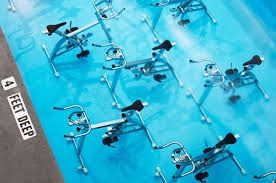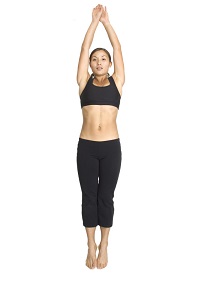 Treadmill exercise has been proven to be beneficial for all kinds of people, including at risk groups like older individuals and pregnant women. Some kinds of aerobic exercises do not suit pregnant women or older people, but walking is always recommended and a treadmill is ideally suited for this purpose. Cardio-vascular exercise derived from walking or running on a treadmill helps you to burn extra calories and will help you to lose weight rapidly if you exercise on a frequent and consistent basis. A treadmill adds consistency to your walking workout and you can set both the pace and duration of your session and increase this in order to achieve a progressive improvement over time. A treadmill can also help you to achieve your personal fitness goals.
Treadmill exercise has been proven to be beneficial for all kinds of people, including at risk groups like older individuals and pregnant women. Some kinds of aerobic exercises do not suit pregnant women or older people, but walking is always recommended and a treadmill is ideally suited for this purpose. Cardio-vascular exercise derived from walking or running on a treadmill helps you to burn extra calories and will help you to lose weight rapidly if you exercise on a frequent and consistent basis. A treadmill adds consistency to your walking workout and you can set both the pace and duration of your session and increase this in order to achieve a progressive improvement over time. A treadmill can also help you to achieve your personal fitness goals.
If you like walking or have been advised to walk regularly, then the weather conditions outside can create problems. When the weather conditions are poor during periods of rain, wind, snow or unfavorable temperature it makes it unpleasant or impossible to walk outside. With a treadmill you don’t need to worry about the weather and you can continue with your regular exercise regime.
With the constant walking on a treadmill looking at the same wall and space, how do you overcome boredom and lack of motivation? Try using the treadmill trainer, an audio workout that you can download on your iPod or Mp3 player to listen on your headphones while you jog/walk on the treadmill. It is like having a mini trainer in your ears to motivate you and guide you every step of the way. Or, try choosing an upbeat music compilation of your favorite motivating songs. You can also pick a time and television show you just can’t miss and plan your treadmill workout during that time. You’ll be so engrossed in your program, you’ll forget all about the calorie burn and exercise you are doing at the same time.
With a consistent treadmill workout, you want to make sure you are preventing injury. Remember these key points when walking or running during your treadmill workout.
- Avoid toe, heel and knee injuries by using good shoes. Replace old worn out shoes so they give you a good support and have proper shock absorption.
- Don’t overdo it. Use the treadmill every other day, not every day. Don’t go too fast and take it slow.
- Warm up. Make sure you stretch and warm up your muscles before getting into your exercise routine.
A treadmill can be an excellent addition to any workout. Use some of these suggestions to keep yourself motivated and injury free. Enjoy walking all year long during any temperature or weather conditions that are outside by doing your walking/running routine on a treadmill.
For more articles go to http://clubonefitness.lifestyleezine.com

 Underwater cycling or aqua cycling is a new underwater workout that is starting to make an appearance in Europe and North America. Underwater cycling brings the stationary bike into the pool. Before making a splash in recreation centers around the world, it was used as a form of physical therapy for injured athletes.Most people know classic cycling from their fitness studio: several stationary bicycles are arranged in a circle. In the front sits the trainer who gives instructions against the background of motivational music. The participants simulate cycling up and down mountains and valleys, and cycle seated or standing. This sport is however not suitable for everyone because it puts a lot of strain on the joints. If you ‘shift’ the bicycle into the water, everything looks quite different. The motion sequences are especially gentle because of the effect of the water and are even more fun. Special water bikes have been developed for this that weigh a little more and don’t rust.
Underwater cycling or aqua cycling is a new underwater workout that is starting to make an appearance in Europe and North America. Underwater cycling brings the stationary bike into the pool. Before making a splash in recreation centers around the world, it was used as a form of physical therapy for injured athletes.Most people know classic cycling from their fitness studio: several stationary bicycles are arranged in a circle. In the front sits the trainer who gives instructions against the background of motivational music. The participants simulate cycling up and down mountains and valleys, and cycle seated or standing. This sport is however not suitable for everyone because it puts a lot of strain on the joints. If you ‘shift’ the bicycle into the water, everything looks quite different. The motion sequences are especially gentle because of the effect of the water and are even more fun. Special water bikes have been developed for this that weigh a little more and don’t rust. If you are an athlete who takes part is sports that require speed, agility and vertical power such as basketball and volleyball, then a plyometric workout will enhance your game. Plyometrics are specifically designed to help increase your vertical leap and better your ability to explode into sudden bursts of speed.Plyometrics leads to better body posture, improved balance and flexibility. Plyometric workouts come in many shapes and forms depending on the specific goals of the athlete. Having a regular plyometric workout is an important part of any strength and conditioning program. It is suggested that you do plyometrics only three or four days a week. Doing it every day could cause serious damage to your body. It is important to give yourself ample rest in between workouts to avoid injury.
If you are an athlete who takes part is sports that require speed, agility and vertical power such as basketball and volleyball, then a plyometric workout will enhance your game. Plyometrics are specifically designed to help increase your vertical leap and better your ability to explode into sudden bursts of speed.Plyometrics leads to better body posture, improved balance and flexibility. Plyometric workouts come in many shapes and forms depending on the specific goals of the athlete. Having a regular plyometric workout is an important part of any strength and conditioning program. It is suggested that you do plyometrics only three or four days a week. Doing it every day could cause serious damage to your body. It is important to give yourself ample rest in between workouts to avoid injury.